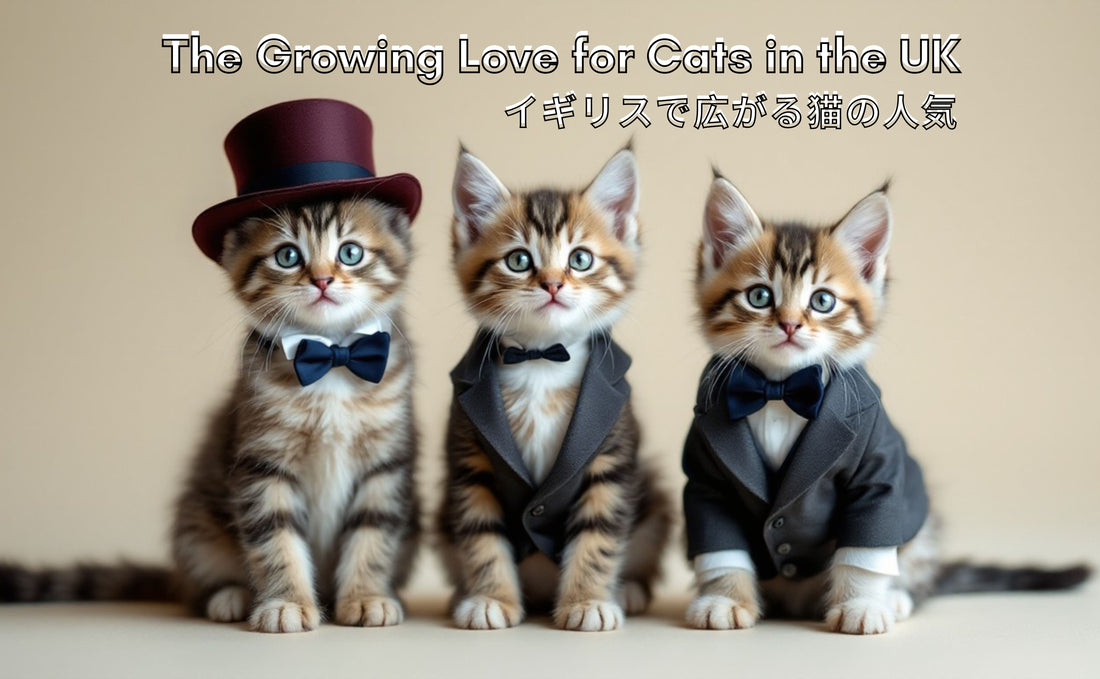For years, the phrase "dogs are man's best friend" has epitomised the UK's deep love for canine companions. But as times change, so do our preferences, and in recent years, cats have quietly stolen the spotlight. Today, cats aren't just popular pets; they are cultural icons, inspiring everything from viral videos to vintage homeware.
My Experience as a Cat Owner: A Tale from Nine Years Ago
I vividly remember a moment from my corporate days, nine years ago, when my Baby Boomer boss caught sight of the photos of my cats on my PC. He laughed and proudly announced, 'I’m a dog person,' as if declaring allegiance in a friendly rivalry. His tone carried a hint of dismissal, subtly suggesting that dogs were somehow more respectable or worthy than cats. At the time, this attitude didn’t surprise me—cats were rarely seen as the main stars in the pet world, and this perception was mirrored everywhere, from shops to greeting cards. Greeting card aisles overflowed with playful pups, while cat-themed products seemed reserved for children. It was as if cats were viewed as quirky side characters in the world of pets.


But somewhere along the way, everything changed.
The Cultural Shift: Cats Take the Spotlight
Suddenly, cats were everywhere. Social media played a huge role, with funny cat videos becoming internet sensations. TV programmes showcasing "cats vs. dogs" debates or featuring heartwarming and hilarious feline antics became primetime hits.

It wasn’t long before cats rivalled, and even surpassed, dogs as the UK's favourite pet. According to some reports, the total number of pet cats in the UK may have overtaken dogs. The reasons behind this rise are varied: cats are ideal for urban living, require less maintenance, and have a mystique that captivates modern lifestyles. While dogs remain a symbol of loyalty and activity, cats have become the ultimate companions for modern living—independent, adaptable, and effortlessly charming.

Cats in the UK vs. Other Cat-Loving Countries
Cats in Japanese Culture
Japan’s cultural appreciation for cats runs deep. The maneki-neko, or "beckoning cat," is one of the country’s most iconic symbols of good fortune and prosperity. These figurines, often displayed in shops and homes, feature a seated cat with one paw raised in a welcoming gesture. They come in various colours, each representing different blessings, from good health to financial success.
Modern Japan’s love for cats is also reflected in its cat cafes, where visitors can enjoy tea or coffee while interacting with friendly felines. Many of these cafes double as adoption centres, helping stray cats find forever homes.
One of Japan’s most unique attractions is Gotokuji Temple in Tokyo, often referred to as the birthplace of the maneki-neko. Rows upon rows of these figurines are displayed outside the temple, creating a serene and enchanting sight that captivates visitors.

Cats in Turkey
In Turkey, cats are deeply respected, reflecting a cultural belief that they bring blessings. Istanbul, often called "the city of cats," is home to thousands of street cats that are cared for by locals and tourists alike. Cats are fed, sheltered, and even provided with small “cat houses” throughout the city. This reverence for cats is deeply ingrained in Turkish culture, symbolising kindness and coexistence.
Cats in Thailand
In Thailand, certain breeds, such as the Siamese cat (known locally as Wichian Mat), hold special significance. Siamese cats are considered symbols of luck and prosperity, often gifted to newlyweds to bless their marriage. Their elegant and striking appearance has made them beloved both within Thailand and around the world. In traditional Thai culture, cats are thought to bring good fortune to homes that care for them well.
Cats in Egypt
Cats hold a particularly fascinating place in Egyptian history. Revered as sacred animals, they were associated with the goddess Bastet, a deity of protection, fertility, and motherhood. Cats were often depicted in art and considered symbols of grace and protection. Their presence in homes was believed to bring good fortune and safeguard the household from harm. This reverence has left a lasting legacy, with Egyptian cats remaining a symbol of elegance and mystery.
The Timeless Appeal of Staffordshire Cats
One of the most popular items in my online store is a pair of Staffordshire Cats. These hand-painted, one-of-a-kind figurines are highly sought after for their rarity and charm. Unlike mass-produced modern pieces, each Staffordshire Cat has a unique personality, reflected in its painted details and expressive features.
British artistry has long celebrated cats, and Staffordshire Cats aren’t the only examples. Winstanley Cats, known for their realistic designs and lifelike expressions, also capture the spirit of feline elegance.
Together, these pieces reflect a deep appreciation for the beauty and character of cats in British culture.
The Artistic Legacy of Louis Wain
No discussion of cats in British culture would be complete without mentioning Louis Wain. Known for his whimsical and anthropomorphic cat illustrations, Wain helped elevate cats from humble pets to beloved muses. His colourful, expressive depictions of cats captured the imagination of the Victorian and Edwardian eras and remain highly collectible today.

I’m proud to offer some of his prints in my store, preserving his legacy for new generations of cat lovers.
Final Thoughts: Cats, Dogs, and the Companionship They Offer
Cats and dogs have shared their lives with humans for thousands of years, each offering companionship in their own unique way. Dogs, often referred to as man's best friend, have been loyal partners throughout history. Cats, meanwhile, charm us with their independence and grace, adapting effortlessly to modern lifestyles.
Both animals bring immeasurable joy and comfort, bridging the gap between wild nature and human connection. Whether you’re greeted by the wagging tail of a dog or the soothing purr of a cat curling up beside you, these companions remind us of the simple happiness found in their presence.
Do you have a favourite memory with a cat or an interesting story about cats in your culture? We’d love to hear from you! Share your thoughts in the comments below and join the conversation with fellow cat lovers.
Explore our collection of cat & dog themed vintage homeware, and bring a touch of feline charm into your home.
By the way, we’re also planning to write an article about dogs and their special place in British culture. How have dogs earned the title of ‘man’s best friend’ in the UK? Stay tuned for more insights!







